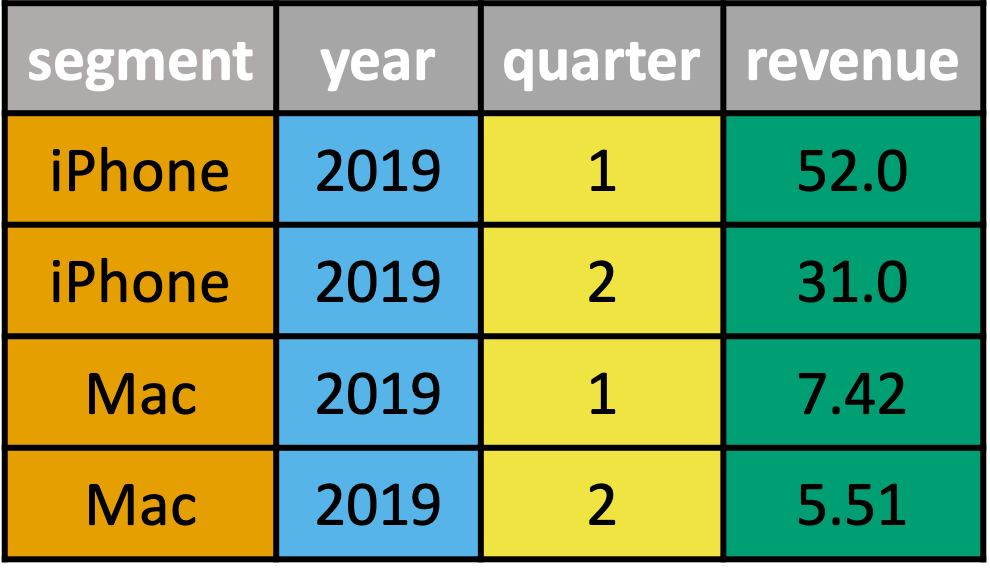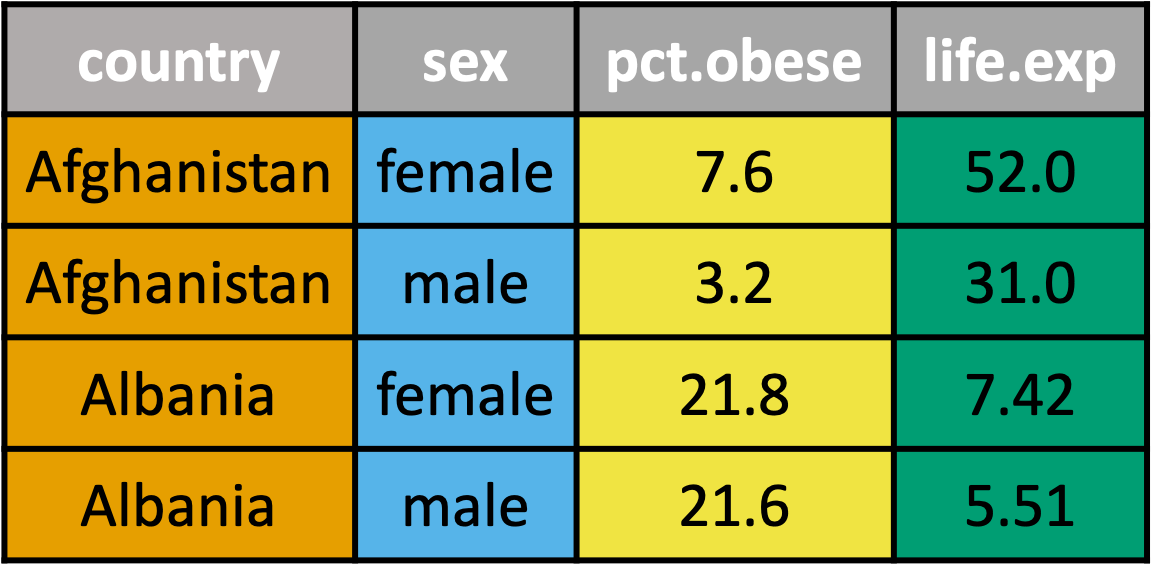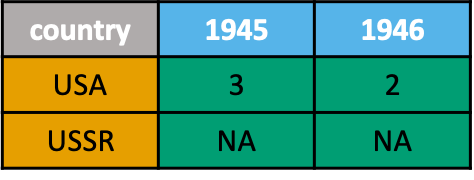Deriving variables from complex column headers
Reshaping Data with tidyr

Jeroen Boeye
Head of Machine Learning, Faktion
Separating column headers into variables


Multiple variable combinations in column headers
who_df
# A tibble: 181 x 5
country female_pct.obese male_pct.obese female_life.exp male_life.exp
<chr> <dbl> <dbl> <dbl> <dbl>
1 Afghanistan 7.6 3.2 64.5 61
2 Albania 21.8 21.6 78.6 74.3
3 Algeria 34.9 19.9 77.4 75.4
4 Angola 12.1 4 64.9 60.3
5 Antigua and Barbuda 25.9 11.6 77.5 72.5
6 Argentina 29 27.3 80.3 73.5
7 Armenia 23 17.1 78.1 71.2
8 Australia 28.4 29.6 84.8 81
Multiple variable combinations in column headers


The special .value name
who_df %>%
# Example input column name = male_obesity.pct
pivot_longer(-country,
names_to = c("sex", ".value"),
names_sep = "_")
# A tibble: 362 x 4
country sex pct.obese life.exp
<chr> <chr> <dbl> <dbl>
1 Afghanistan female 7.6 64.5
2 Afghanistan male 3.2 61
3 Albania female 21.8 78.6
pivot_longer() recap






Uncounting data
nuke_df
# A tibble: 8 x 2
country n_bombs
<chr> <int>
1 Pakistan 2
2 India 6
3 North Korea 6
4 United Kingdom 21
5 China 45
6 France 200
7 Russian Federation 726
8 United States 1150
The uncount() function
nuke_df %>%
uncount(n_bombs)
# A tibble: 2,156 x 1
country
<chr>
1 Pakistan
2 Pakistan
3 India
4 India
5 India
6 India
# ... with 2,150 more rows
The uncount() function
nuke_df %>%
uncount(2)
# A tibble: 16 x 2
country n_bombs
<chr> <int>
1 Pakistan 2
2 Pakistan 2
3 India 6
4 India 6
5 North Korea 6
6 North Korea 6
# ... with 10 more rows
The uncount() function
nuke_df %>%
uncount(n_bombs, .id = "bomb_id")
# A tibble: 2,156 x 2
country bomb_id
<chr> <int>
1 Pakistan 1
2 Pakistan 2
3 India 1
4 India 2
5 India 3
6 India 4
# ... with 2,150 more rows
Let's practice!
Reshaping Data with tidyr

